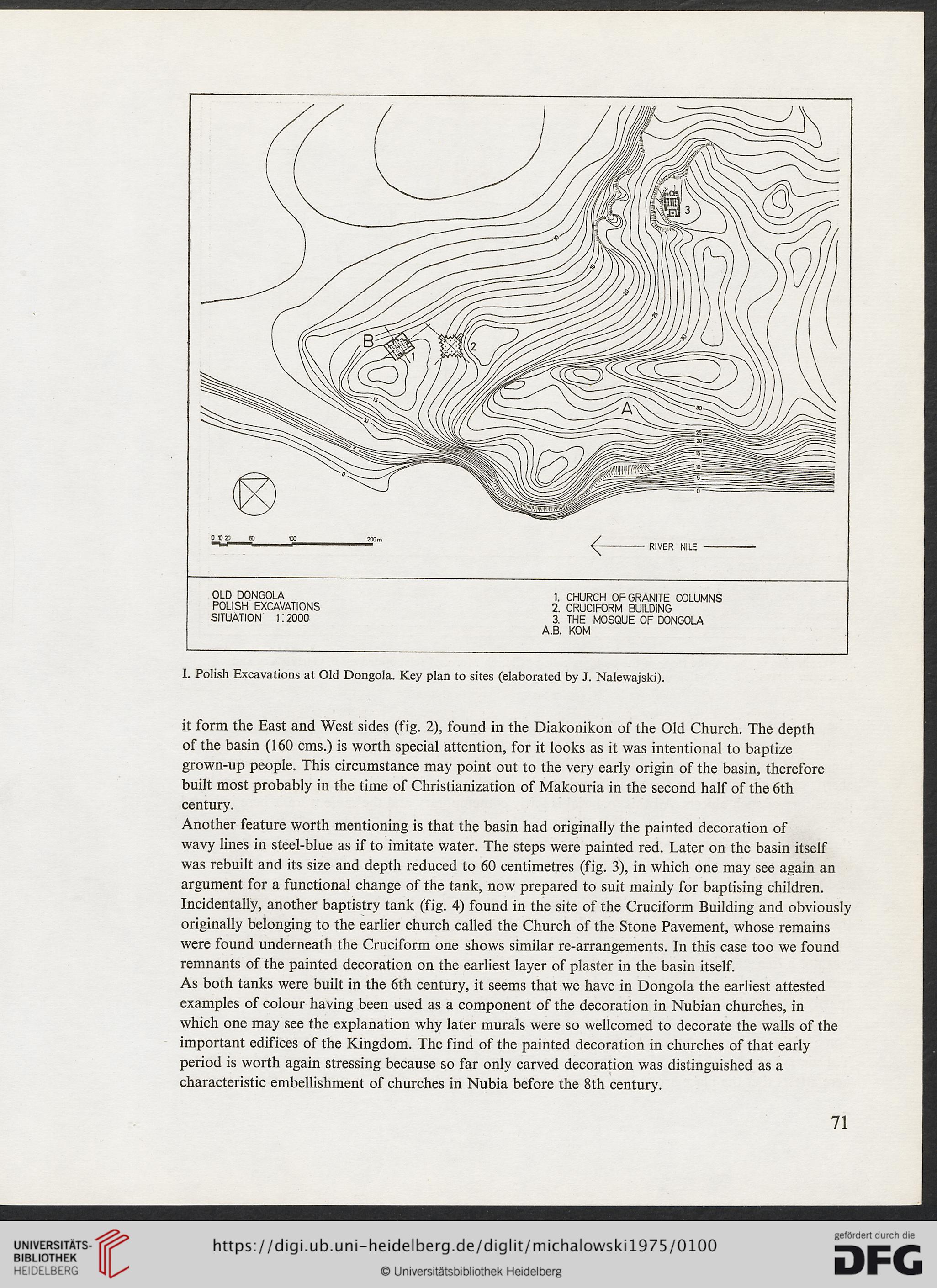I. Polish Excavations at Old Dongola. Key plan to sites (elaborated by J. Nalewajski).
it form the East and West sides (fig. 2), found in the Diakonikon of the Old Church. The depth
of the basin (160 cms.) is worth special attention, for it looks as it was intentional to baptize
grown-up people. This circumstance may point out to the very early origin of the basin, therefore
built most probably in the time of Christianization of Makouria in the second half of the 6th
century.
Another feature worth mentioning is that the basin had originally the painted decoration of
wavy lines in steel-blue as if to imitate water. The steps were painted red. Later on the basin itself
was rebuilt and its size and depth reduced to 60 centimetres (fig. 3), in which one may see again an
argument for a functional change of the tank, now prepared to suit mainly for baptising children.
Incidentally, another baptistry tank (fig. 4) found in the site of the Cruciform Building and obviously
originally belonging to the earlier church called the Church of the Stone Pavement, whose remains
were found underneath the Cruciform one shows similar re-arrangements. In this case too we found
remnants of the painted decoration on the earliest layer of plaster in the basin itself.
As both tanks were built in the 6th century, it seems that we have in Dongola the earliest attested
examples of colour having been used as a component of the decoration in Nubian churches, in
which one may see the explanation why later murals were so wellcomed to decorate the walls of the
important edifices of the Kingdom. The find of the painted decoration in churches of that early
period is worth again stressing because so far only carved decoration was distinguished as a
characteristic embellishment of churches in Nubia before the 8th century.
71




